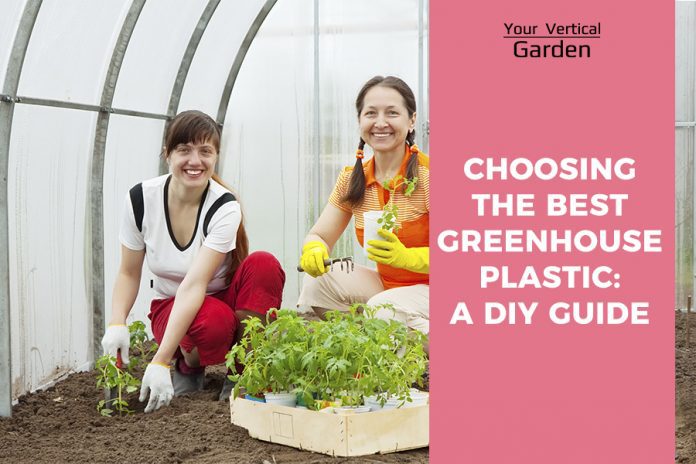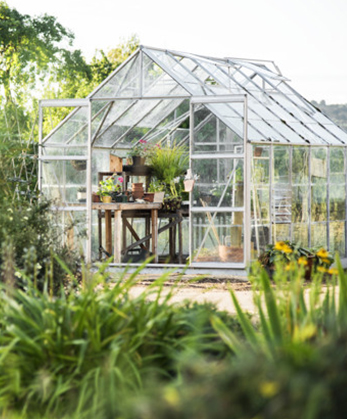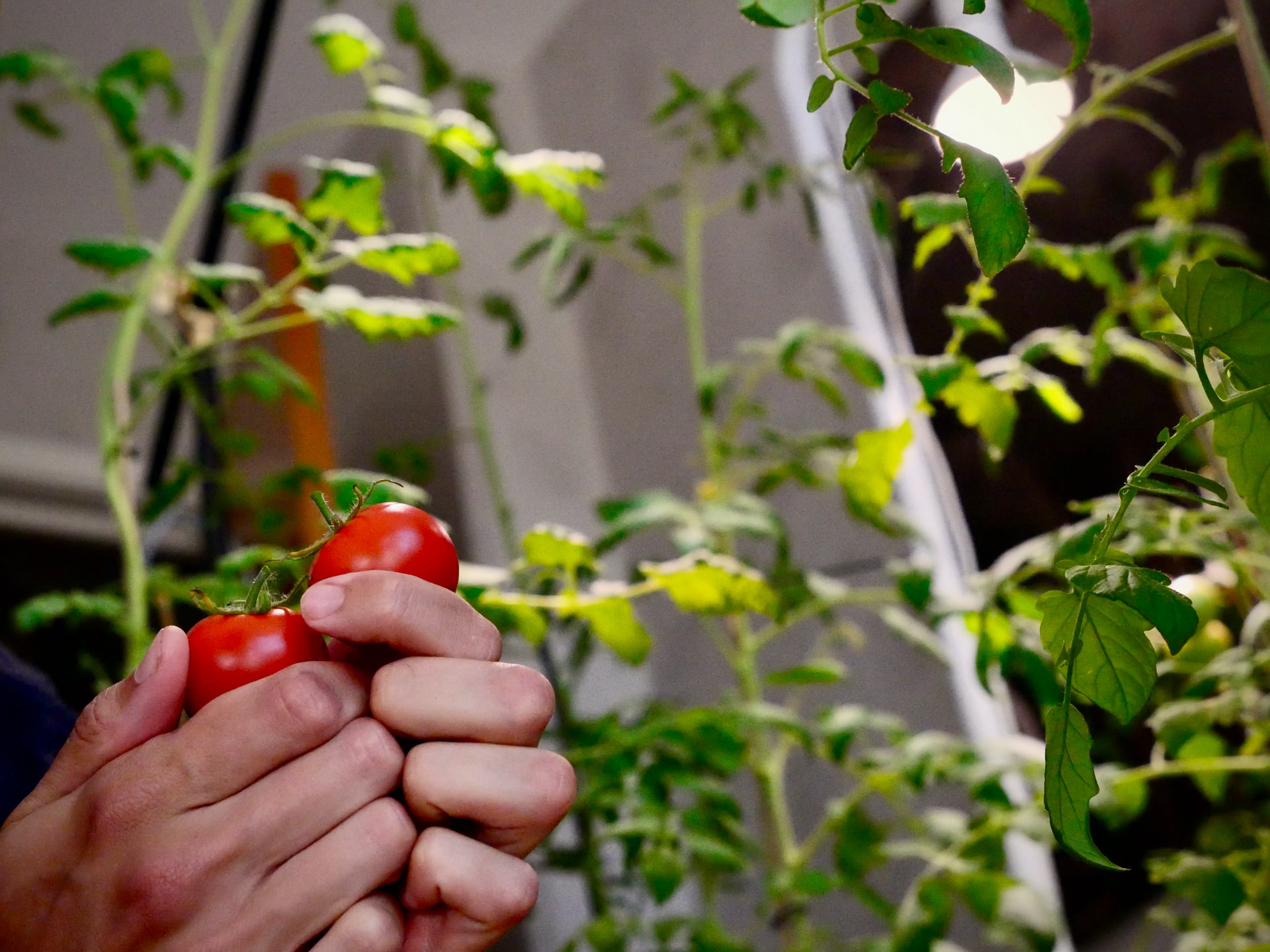
Want to take control of growing your own food and flowers? Then you might want to buy some greenhouse plastic and start building. More than one-third of modern U.S. households grow their own food now. It’s more than just a trend. Growing plants at home lets you save money on groceries, make healthier eating choices and connect with the soothing benefits of gardening. For people who do not have plots of land, vertical gardening is a terrific way to do that too. Research has shown that growing your own plants comes with many health benefits. From boosting your mood and increasing vitamin D levels to lowering the risk of dementia, there’s more to the joy of gardening than just enjoying fresh produce.
However, few climates are suitable for year-round outdoor gardening. If you want to avoid the negative effects of the climate and extend the growing season, a greenhouse is a great way to expand your possibilities. To get the most out of your greenhouse, you need to know some key things, such as how to choose the best greenhouse plastic for your climate. Once you have that down, you’ll be ready to start gardening.
What is Greenhouse Plastic?
When you think of greenhouses, you probably think of glass. However, greenhouse plastic comes with a lot of benefits, especially if you’re building the greenhouse yourself. Plastic-based greenhouses are lighter, easier to build, and less expensive than glass greenhouses.
The plastic keeps the humidity and heat inside the greenhouse, just like the glass frame would. And with the right plastic, you can grow all kinds of flowers and plants inside, even in the middle of winter.
However, you can’t use just any plastic. Greenhouse plastic is more durable than ordinary plastic. If you use regular plastic, the ends of it will fray, and any little cut will quickly become a large tear. But greenhouse plastic is designed to hold up against the weather and resist tearing. This kind of plastic is often knitted together, rather than made of a solid sheet, so it’s extra durable.
You’ll easily be able to wrap greenhouse plastic around a variety of greenhouse shapes and sizes. You can also frame it around the doors, windows, and vents, allowing for a more customizable design.
Greenhouse Plastic and Your Climate
Before you can decide on the best greenhouse plastic for your project, you’ll need to think about your local weather conditions. If you live somewhere, that has cool, wet winters, but not many hard frosts, you can use a lightweight plastic. In fact, climates like this allow growing without a greenhouse, although a greenhouse is ideal for early seed starting.
However, if your wet, cold area does get hard frosts, you’ll need a thicker greenhouse plastic. Since you’ll probably use the greenhouse every year, it’s important to find something that will last a long time. If your climate tends to involve light snows in the winter, it’s important to make sure the snow will easily slide off the top of the greenhouse. The plastic also needs to be thick enough to keep the cold air from affecting the plants inside. But it’s just as important to make sure winter sunlight can easily get through and reach your plants.
For the coldest winter climates, you can still use greenhouse plastic, but you might need to add an inner layer of insulation to keep the cold out, or even a second plastic layer. And if the snows in your area get heavy, you should consider the average weight of the snowpack. You’ll need to regularly clear snow off the greenhouse so the sun can shine through, and you’ll also need it to stay warm. A rigid, heavily insulated design works best in these climates.
How to Choose the Best Greenhouse Plastic
Greenhouse plastic was first used in the 1960s, but since then, many upgrades have been made to the design possibilities. There are a few things to keep in mind when choosing the best greenhouse plastic – here’s what you should consider when you make your choice.
Lifespan
The lifespans of plastics like polyethylene are limited. These materials naturally degrade with time, since they’re exposed to heat and sunlight, no matter how durable they are at first. If you’re building a seasonal greenhouse that won’t stay up all year round, you won’t need to consider lifespan. But for a more permanent structure, you should make sure the greenhouse plastic will last more than one season.
Manufacturers typically warrant their greenhouse-grade plastics for some years. They’re more expensive than other plastics because they last longer. Features like built-in ultraviolet stabilizers help combat degradation. A reinforced, woven material might be needed if your area has high winds.
Thickness
Greenhouse plastic usually comes in a thickness of six millimeters. Anything less than that won’t hold up to multiple seasons of weather. However, you might need more thickness for insulation purposes.
Condensation control
Anti-drip or anti-condensate is a wetting agent that can be applied to all kinds of materials, including greenhouse plastic. That reduces the surface tension of the plastic, so condensation flows over it instead of beading up into droplets. You can find greenhouse plastic with built-in condensation control, or spray it over the surface yourself. It will protect from condensation for a couple of years.
What’s wrong with condensation? These droplets can reduce the transmission of sunlight through the plastic, and even cause diseases if they drip onto your plants. You can also consider anti-fogging additives to prevent the formation of fog in your greenhouse.
Heat loss
Plastic additives and insulation layers help keep the heat in your greenhouse from getting out. That can save you lots of money on heating your greenhouse, and keep the plants thriving in cold weather. Some greenhouse plastics use an infrared insulation layer to help keep the heat in. It helps your plants grow faster, denser, and even more colorful. You’ll have to pay a bit more for insulated plastics, but the results can be worth it.
Heat gain
If your area has hot summers, you’ll also need to think about how to manage the heat gain. In a climate with strong sunlight, you might need greenhouse plastic that blocks some of the infrared spectrum. This keeps the inside temperature down, so the plants don’t get overheated. Pigments are typically used on the outside layer of plastic to absorb or block the infrared radiation.
Ultraviolet light
If you use bees to pollinate your greenhouse plants, make sure the plastic lets some UV light through. Bees use the UV light to navigate. However, if you don’t have bees, it may be better to get greenhouse plastic that blocks UV rays. That helps reduce the numbers of harmful insects like aphids and may help prevent fungal plant diseases.
Light diffusion
Some greenhouse plastic manufacturers are now considering light diffusion as an important feature. Certain types of plastic allow more diffused light to get to the plants, so there’s less scorching, and more light can reach the hidden lower leaves. If you’re growing tall flowers or crops, this is especially important. Diffused light can even help reduce the development of fungal spores and insects, too.
Light transmission
Smog, dust, and the deterioration of the plastic can all contribute to reduced light transmission. However, with more light, you get more plant growth. You may want to replace your plastic more often than strictly necessary for a boost in light levels. You can also look for anti-static plastic that repels light-blocking dirt, dust, and smog.
Layers
Should you choose single, double, or even triple layer plastic? Again, it depends on your climate and what you plan to grow. Often, a single layer works well enough. But if you need to keep extreme temperatures from affecting your plants, you’ll need a double layer. Double layers also don’t get stressed as quickly at the attachments, and resist rippling from high winds so that they can last longer.
Types of Greenhouse Plastic
With all this in mind, what type of greenhouse plastic should you choose? Although there are countless subcategories, coatings, and features, here are a few of the basic plastic types to get you started.
No matter what kind of plastic you choose, there are a few things that will always cause damage. Make sure to avoid abrasion from rough or sharp surfaces, attachment stress, and heat build-up. Chemicals from pressure-treated lumber or pesticides will also make any type of greenhouse plastic wear out faster. With that in mind, here are the basic kinds of plastic to choose from.
No products found.
No products found.
You can buy this greenhouse plastic in commercial grade, for industrial use, or utility grade, for personal use. If you maintain it well, the utility grade will last for a couple of years. Buy a poly repair get to fix up any small tears in the meantime.
No products found.
No products found.
Copolymer is a type of polyethylene that offers more durability and a longer lifespan. You can use it on your greenhouse for three years before it gets too brittle. However, the more it freezes and thaws, the faster it will become brittle and break. If you spend more for the most expensive types of copolymer, they can be more durable, though.
No products found.
No products found.
The next level up in durability is polyvinyl greenhouse plastic. It’s more expensive, but stronger and longer-lasting. If you regularly clean it, inspect it for damage, and care for it, you’ll only need to replace it once every five years.
No products found.
No products found.
Finally, the most durable kind of greenhouse plastic is polycarbonate. It’s actually made of a double layer of polyethylene plastics. Care for this greenhouse material, and it can last you for up to ten years. It’s also great for keeping the humidity and heat in during cold winter months.
Choosing the Best Greenhouse Plastic For Your Climate
Building and maintaining a greenhouse is no small task. When you choose the right kind of greenhouse plastic, though, you’ll ensure that your efforts pay off with great crops all year round.
Whether you have a large operation with crops to sell at the farmer’s market, or just a small personal flower bed, a greenhouse helps extend the amount of time you can enjoy the growing season. What will you grow in your plastic greenhouse? Leave a comment and let us know!
Last update on 2022-01-27 at 20:02 / Affiliate links / Images from Amazon Product Advertising API





